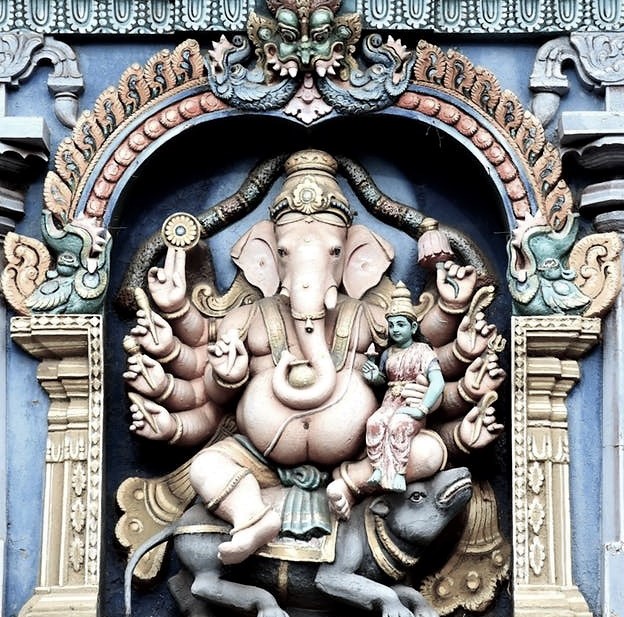- Special FeaturesFoundation YearOne of the ancient temples of Lord Shiva, that can be found in Varanasi 17th centurySthala TreeTheerthamRathamArchitectureCompleted - 17th century Elevation - 80.985[1] m (266 ft)Other Speciality
- Sthala Puran
In order to know who is the eternal and supreme power, many great saints went to Mount Sumeru and asked Lord Brahma. Lord Brahma said that he was the eternal and the supreme power. Lord Vishnu disagreed with him. They both hence decided to refer to the four Vedas to resolve the disagreement.
The Rigveda mentioned that Rudra (the name Rudra is a synonym for Lord Shiva) is the supreme power as he has the power to control all living beings.
The Yajurveda mentioned that Lord Shiva is supreme as he can be worshiped by various Yajnas. The Sām Veda declared that Tryambakam is supreme as He is worshipped by a variety of Yogis and can control the entire world.
The Atharvaveda stated that Lord Shankar is supreme as He can eliminate all the troubles of human beings.
All the four Vedas unanimously concluded that Lord Shiva is the ultimate supreme power, a conclusion that was laughed at by both Lord Brahma and Lord Vishnu. Then Lord Shiva appeared as a powerful divine “shine (Jyoti)” between Lords Brahma and Vishnu.
Bramha got very angry and started to stare at the “shine” with his 5th head (which started to burn out of anger). Lord Shiva instantly created a new being (King of "Kaal": "Kaal Bhairav").
Kaal Bhairav beheaded the burning head of Brahma. Lord Shiva then pronounced that "Kaal Bhairav" will forever be in Kashi to remove the sins of the people.
Lord Shiva told Kaal Bhairav to go and worship at different places but the "Brahmanahatya Dosha" continued to follow him until he reached Kashi (also known as "Moksha Puri") where Bramha's head (held by Kaal Bhairav) fell on the ground.
The place is called "Kapal Mochan Teerth". Brāhmanahatya Dosh went away as soon as Kaal Bhairav entered Kashi. Since that day, Kaal Bhairav stayed in Kashi forever and protects devotees from their problems.
Kaal Bhairav is believed to be the Kotwal of Varanasi and anyone who wants to live in Varanasi needs to take his permission to live in the city.
Situated in Bharonath, Vishweshwarganj, Varanasi, this temple has great historical and cultural importance in Hinduism. The temple is dedicated to one of the fiercest forms of Lord Shiva and wears a garland of skulls and carries a club of peacock feathers. The word "Kaal" means both "death" and "fate". It is believed that even death is afraid of "Kaal Bhairava".
The vahana of Lord Bhairav is the dog. Housed in the inner sanctum of the temple is a silver-faced idol of Kaal Bhairav who is seated on a dog and is holding a trident. Only the face decorated (with garlands) of the idol is visible to the visitors through the doorway.
The rest of the idol is covered with a piece of cloth. On the rear door of the temple, there is a statue of Kshetrapal Bhairav.
- Architecture
- Alankar of Deity
- Prayers and BenefitsSpecial Vratas and PrayersOfferings to DeityStotras and Mantras
- FestivalsRudrakshaShringarAnnakutBhairav Ashtami
- Sodasha Upcharas
- Prasadhas
- Social ActivitiesAnnadhanMarriageEar BoringHead ShaveDanaasEducation FacilitiesSocial DrivesOther Activities
- Arjita Seva
- Tags

